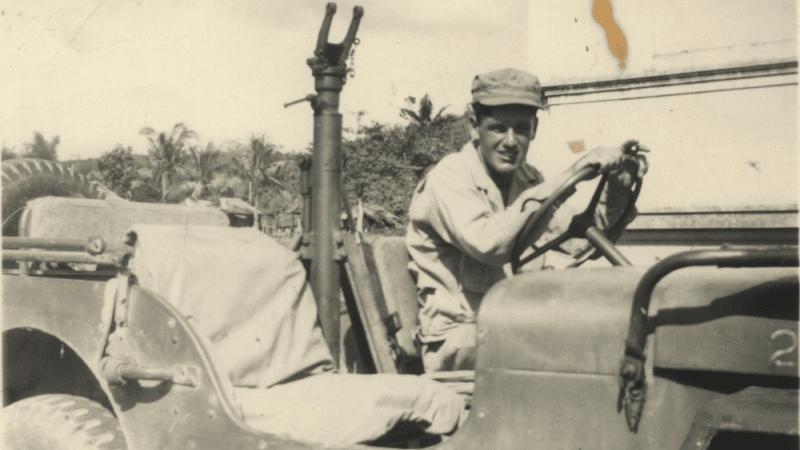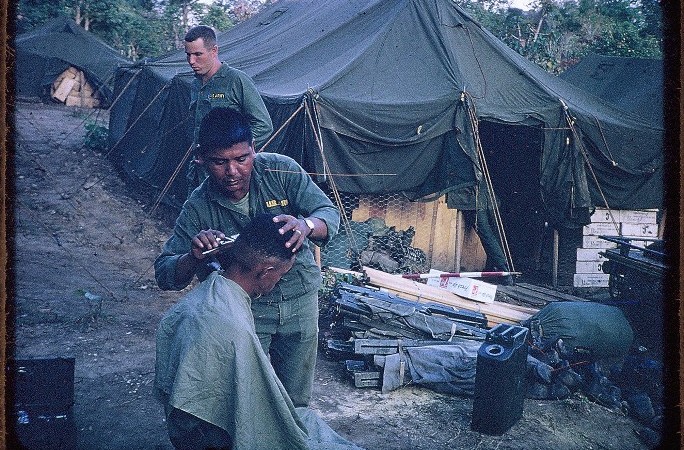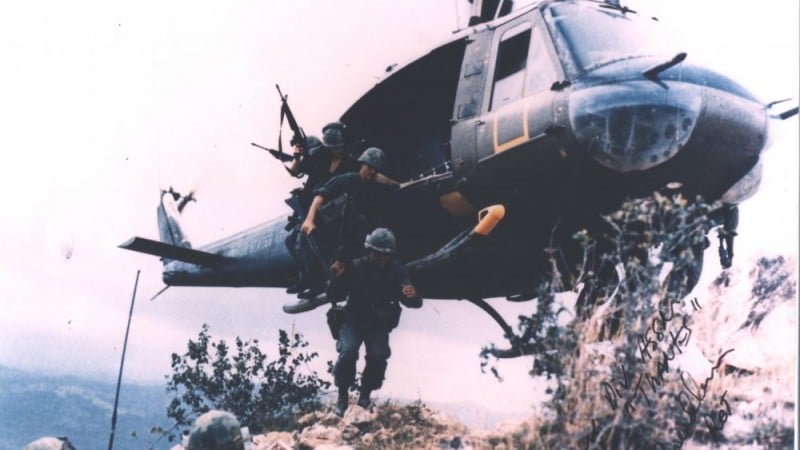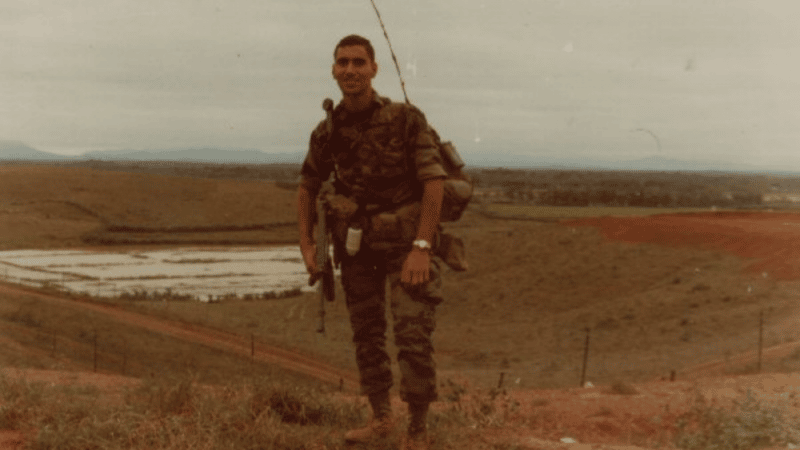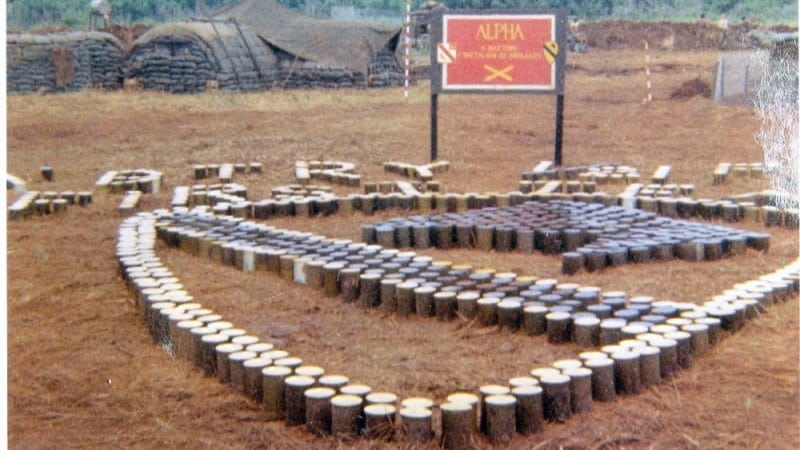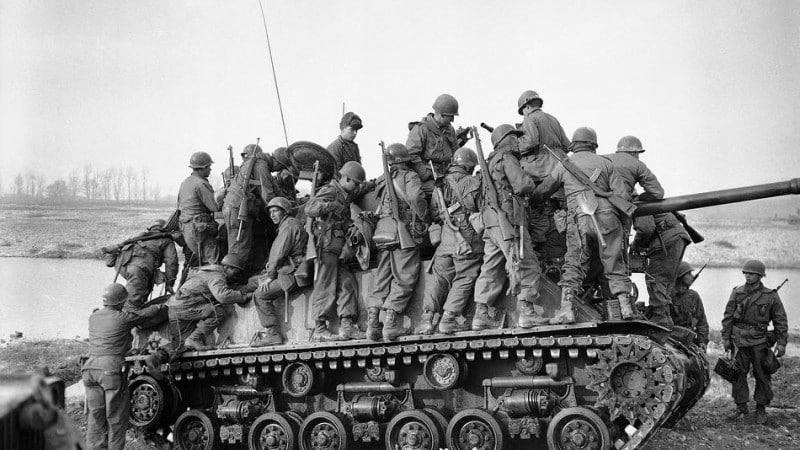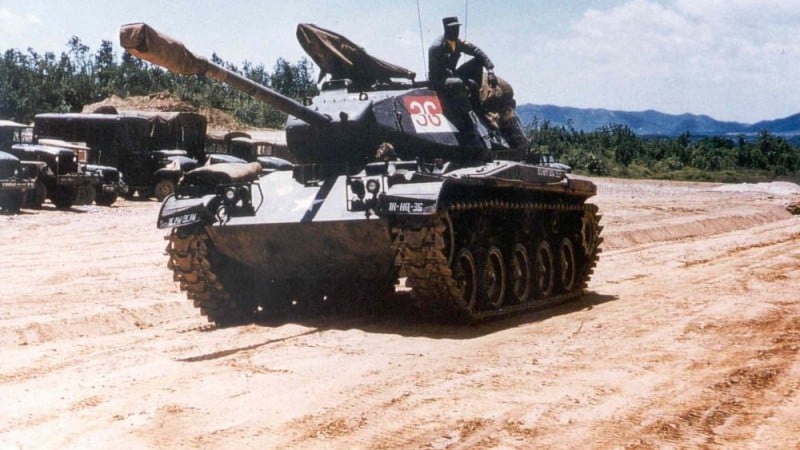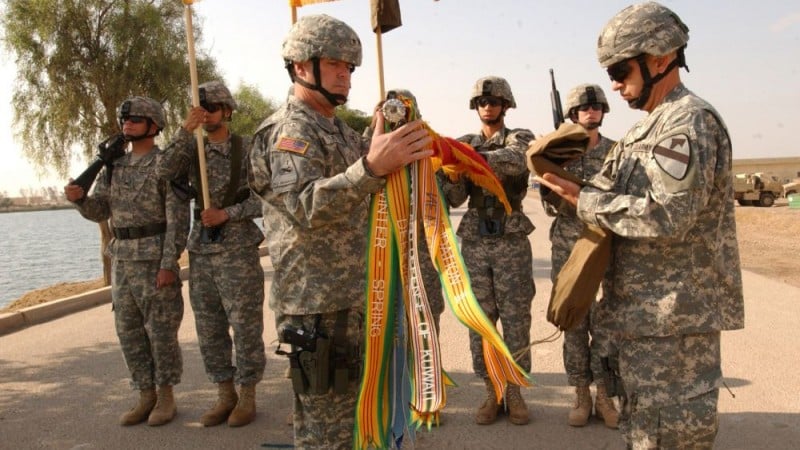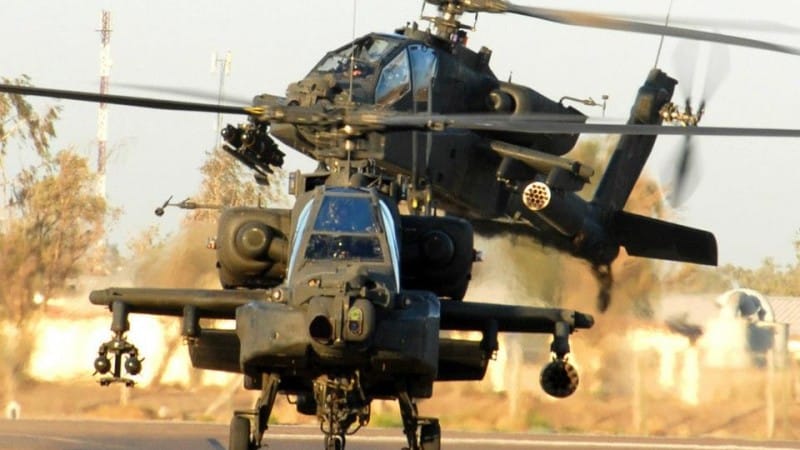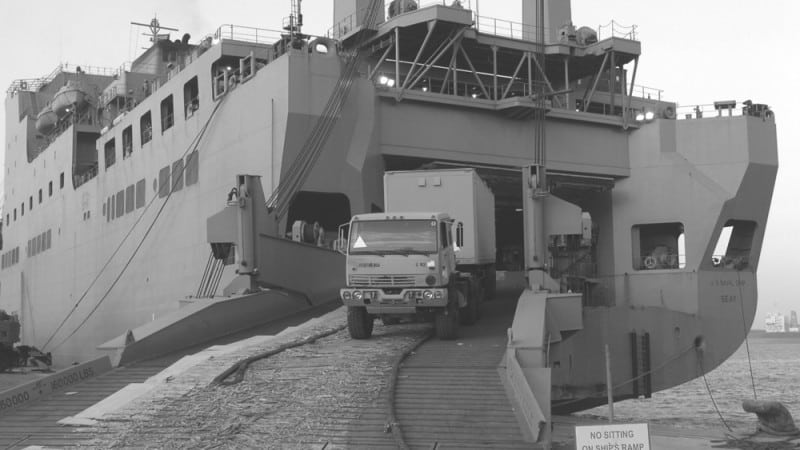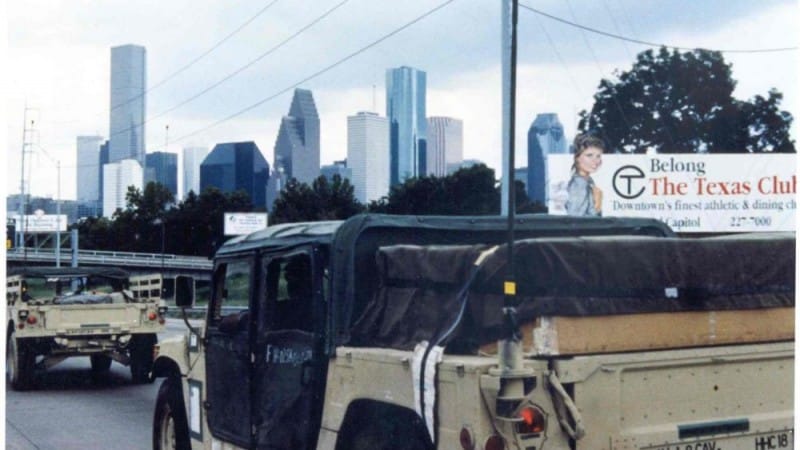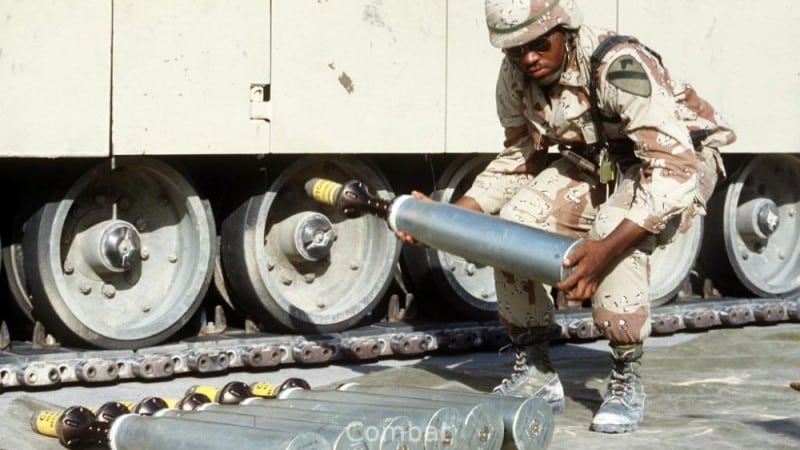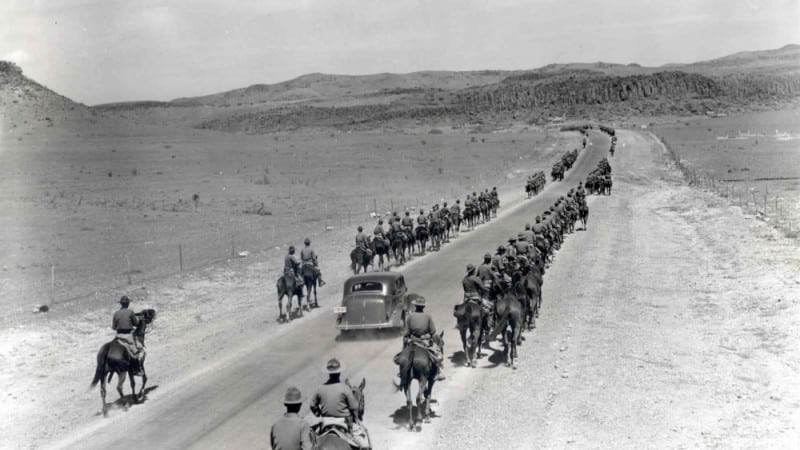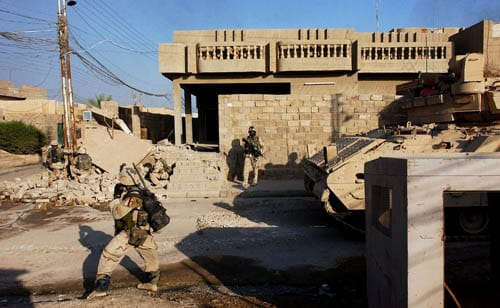1st Brigade, 1st Cavalry Division
“Iron Horse”
The 1st (IRONHORSE) Brigade was constituted 29 August 1917 in the Regular Army as Headquarters, 1st Cavalry Brigade. The following February the Brigade was stationed at Fort Sam Houston, Texas. The Brigade’s initial wartime service was patrolling the Mexican Border, until demobilization, 14 July 1919, at Brownsville, Texas. Operating from horseback, the cavalry was the only force capable of piercing the harsh terrain of the desert to halt the band of smugglers that operated along the desolate Mexican border.
The Brigade fought as Infantry in the Pacific Theater of World War II. It fought valiantly on New Guinea, the Bismarck Archipelago, and the Philippines, earning both the United States and the Philippines Presidential Unit Citation. The 1st Brigade Headquarters was converted and redesignated as Headquarters, 1st Constabulatory Brigade, on 20 May 1949, and served in Germany. The Brigade was relieved from assignment to the United States Constabulatory on 24 November 1950. On 15 August 1951, they deactivated in Germany and disbanded on 5 December 1951. The Brigade was again reconstituted in the Regular Army, converted, and redesignated on 15 July 1963, as Headquarters and Headquarters Company, 1st Brigade, 1st Cavalry Division in Korea.
The 1st Brigade was transferred to Fort Benning, Georgia, in July 1965 and deployed to Vietnam with the 1st Cavalry Division later that year. The Brigade was involved in many major operations including the Ia Drang Battle, the Pleiku Campaign, and the Cambodian Operation. The Brigade was sent to Fort Hood in July 1971 after departing Vietnam.
In June 1972, the brigade received the official designation of “IRONHORSE.” The “IRONHORSE” Brigade deployed to Operation Desert Shield/Storm in October 1990 and conducted military operations with Allied Forces throughout the 6 month Gulf Campaign. The 1st Brigade redeployed to Fort Hood, Texas, in April 1991. Since 1991, elements of the Brigade have deployed to Guantanamo Bay for Operation Island Sentinel, to the Emirate of Kuwait for Operation Intrinsic Action, to the Republic of Korea for Exercise Foal Eagle, and the National Training Center at Fort Irwin, California for annual training.
In April, 1998, the IRONHORSE Brigade was alerted for peace enforcement duty in Bosnia-Herzegovina as part of Stabilization Forces (SFOR) 4 on Operation Joint Forge. The IRONHORSE Brigade deployed to Bosnia from August 1998 until March 1999 and was crucial to maintaining peace and stability during a very critical and potentially violent time in Bosnia.
Following an intense train-up period, including the first ever Low-intensity Conflict rotation at the National Training Center, the IRONHORSE Troopers deployed in support of Operation IRAQI FREEDOM II in March 2004. There the IRONHORSE Brigade Combat Team fought some of the war’s most intense street battles in the dense urban terrain of Baghdad’s Eastern sectors and directed hundreds of millions of dollars at infrastructure improvements and equipping the Iraqi Security Forces. In March of 2005, the BCT redeployed back to Fort Hood and began the task of preparing for reorganization into a modular Brigade Combat Team.
Throughout 2006, the brigade reorganized to a Heavy Brigade Combat Team. The modular IRONHORSE Brigade Combat Team then deployed to Iraq in October of 2006 in support of Operation Iraqi Freedom 06-08. Taking over the largest and one of the most populated areas in Multi-National Division-Baghdad (MND-B), the IRONHORSE Brigade Combat Team was an integral part of the surge operation in Baghdad. The initial focus on combat operations provided a safe, stable, and secure environment which allowed reconciliation efforts of both Sunni and Shia tribal leaders and led to a significant expansion of Iraqi Security Forces, local government, and infrastructure improvement followed by a flourishing economic and cultural growth. The brigade redeployed from Iraq to Fort Hood in January 2008 after an extended (over 12 months) tour.
In February 2009, the IRONHORSE Brigade again answered the call to duty and deployed with 1st Cavalry Division to assume mission in the North-East corner of Baghdad. As the flagship brigade for the “First Team” division, the area of operations for the brigade included Sadr city, Rusafa, Adahmiyah and Istiqlaal, and was extended during the deployment to include Taji and Tarmiyah. The brigade had a significant role in the transfer of bases and responsibility to the Iraqis. In total, 9 facilities were transferred from US to Iraqi possession. The brigade partnered with Iraqi Security Forces including brigades of the 9th Iraqi Army Division as well as the 11th Iraqi Army Division throughout the deployment and was present for the historic 30 June 2009 transition when the Iraqi Security Forces took responsibility for security.
The Brigade assisted the people of Iraq by supporting civil capacity projects with embedded Provincial Reconstruction Teams (ePRT) and assigned civil affairs units which improved quality of life and gave a sense of normalcy to the population. Through Civil Affairs projects, security support, and partnership with the ISF the IRONHORSE Brigade made an historic difference in the lives of Iraqis in and around Baghdad. The Brigade returned to Fort Hood in January 2010.
In 2011, the 1st BCT again deployed to Iraq in support of Operation NEW DAWN.
In September 2014, the IRONHORSE Brigade Combat Team which was regionally aligned with Europe supported Operation COMBINED RESOLVE by deploying from September to December. This operation also included Operation ATLANTIC RESOLVE to create a single operation executed across Germany, Poland, and the Baltic States.
On January 28, 2016, the entire 1st Brigade Combat Team consisting of its Headquarters and subordinate battalions: 1-7, 2-5, 2-8, and 2-12 Cavalry, 1-82 FA, 91 BEB, and 115 BSB cased their colors for an upcoming 9-month deployment to Korea. The 1st BCT took over in Korea from the 2nd BCT on 25 February and returned to Fort Hood at the end of their nine month deployment at the end of October 2016.
As of today, the 1st IRONHORSE Brigade Combat Team, 1st Cavalry Division, stands ready to lead the way to any contingency area world-wide to accomplish any mission that the future might bring.
Headquarters, 1st Brigade Combat Team,
1st Cavalry Division Lineage and Honors
As of 25 January 2008
Lineage
Constituted 29 August 1917 in the Regular Army as Headquarters, 1st Cavalry Brigade
Organized in February 1918 at Fort Sam Houston, Texas, as an element of the 15th Cavalry Division
Relieved 12 May 1918 from assignment to the 15th Cavalry Division
Demobilized 14 July 1919 at Brownsville, Texas
Reconstituted 20 August 1921 in the Regular Army as Headquarters, 1st Cavalry Brigade, and assigned to the 1st Cavalry Division (later redesignated as the 1st Cavalry Division, Special)
Organized 1 September 1921 at Camp Harry J. Jones, Arizona
Inactivated 25 March 1949 in Japan and relieved from assignment to the 1st Cavalry Division, Special Converted and redesignated 20 May 1949 as Headquarters, 1st Constabulary Brigade, and activated in Germany
Inactivated 15 August 1951 in Germany
Disbanded 5 December 1951
Reconstituted 15 July 1963 in the Regular Army as Headquarters and Headquarters Company, 1st Brigade, 1st Cavalry Division
Activated 1 September 1963 in Korea
Headquarters, 1st Brigade, 1st Cavalry Division, reorganized and redesignated 17 October 2005 as Headquarters, 1st Brigade Combat Team, 1st Cavalry Division (Headquarters Company, 1st Brigade, 1st Cavalry Division – hereafter separate lineage)
Honors
Campaign Participation Credit |
| World War II: New Guinea; Bismarck Archipelago (with arrowhead); Leyte (with arrowhead); Luzon
Vietnam: Defense; Counteroffensive; Counteroffensive, Phase II; Counteroffensive, Phase III; Tet Counteroffensive; Counteroffensive, Phase IV; Counteroffensive, Phase V; Counteroffensive, Phase VI; Tet 69/Counteroffensive; Summer-Fall 1969; Winter-Spring 1970; Sanctuary Counteroffensive; Counteroffensive, Phase VII Southwest Asia: Defense of Saudi Arabia; Liberation and Defense of Kuwait War on Terrorism: Iraq |
Decorations |
| Presidential Unit Citation (Army), Streamer embroidered LUZON Presidential Unit Citation (Army), Streamer embroidered PLEIKU PROVINCE Valorous Unit Award, Streamer embroidered FISH HOOK Meritorious Unit Commendation (Army), Streamer embroidered SOUTHWEST ASIA 1990-1991 Philippine Presidential Unit Citation, Streamer embroidered 17 OCTOBER 1944 TO 4 JULY 1945 Republic of Vietnam Cross of Gallantry with Palm, Streamer embroidered VIETNAM 1965-1969 Republic of Vietnam Cross of Gallantry with Palm, Streamer embroidered VIETNAM 1969-1970 Republic of Vietnam Cross of Gallantry with Palm, Streamer embroidered VIETNAM 1970-1971 Republic of Vietnam Civil Action Honor Medal, First Class, Streamer embroidered VIETNAM 1969-1970 |

